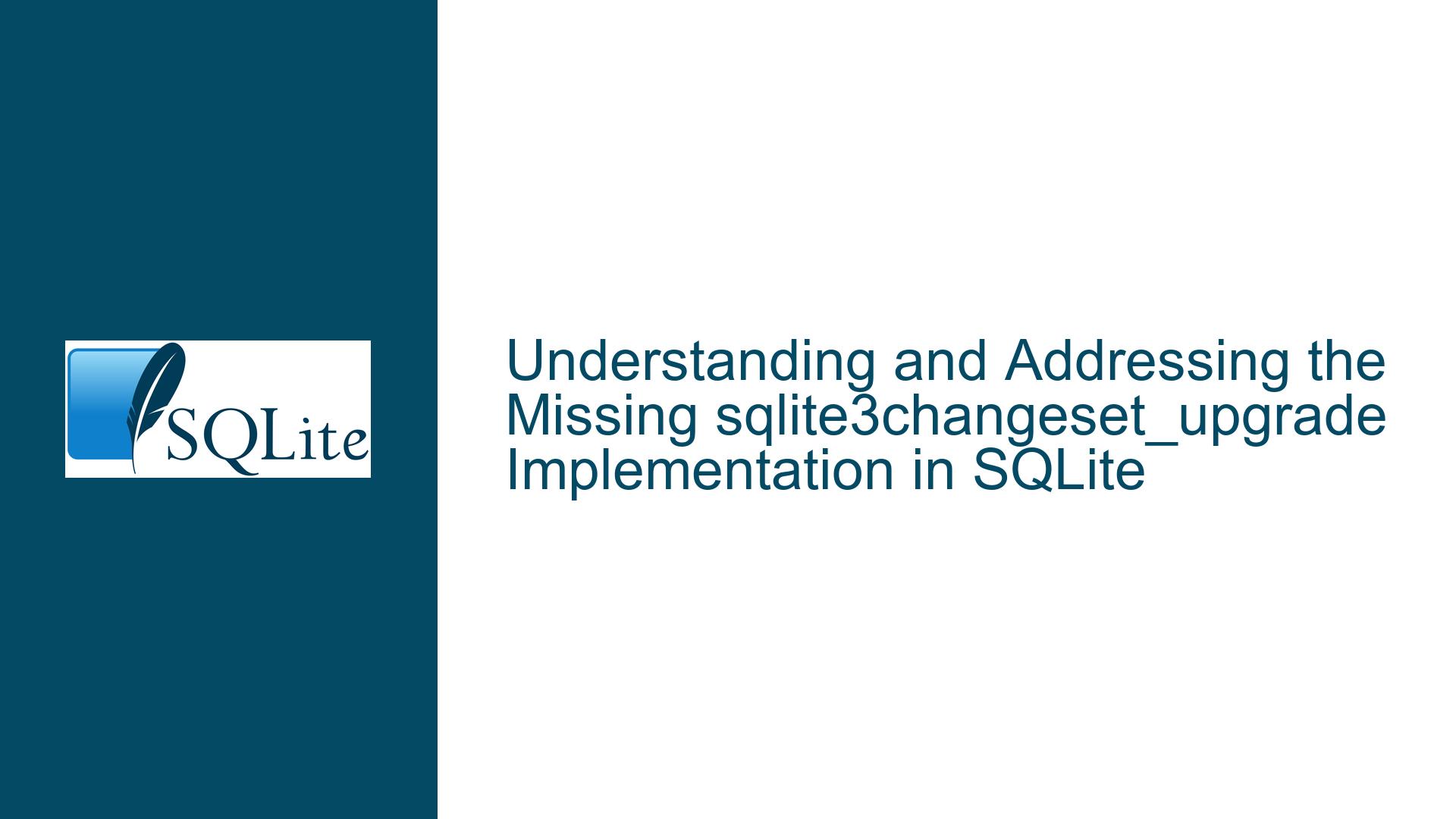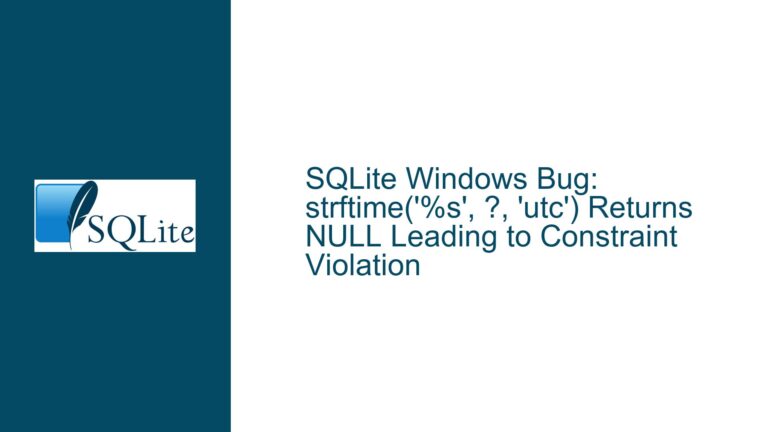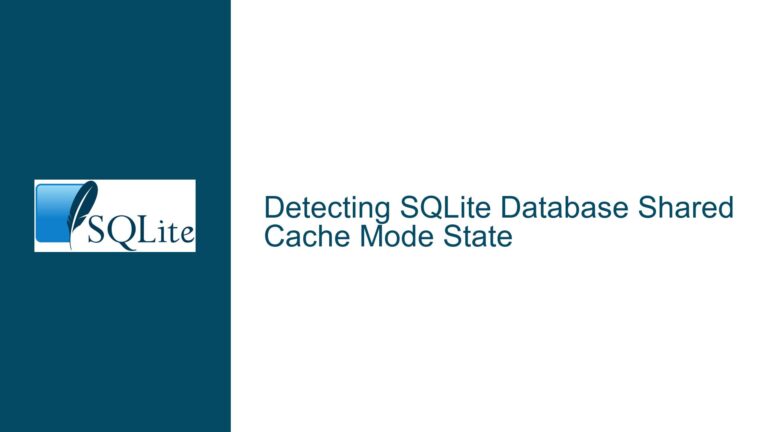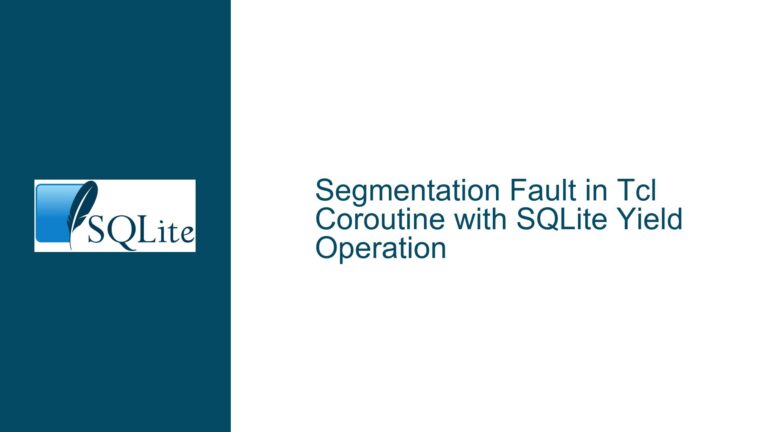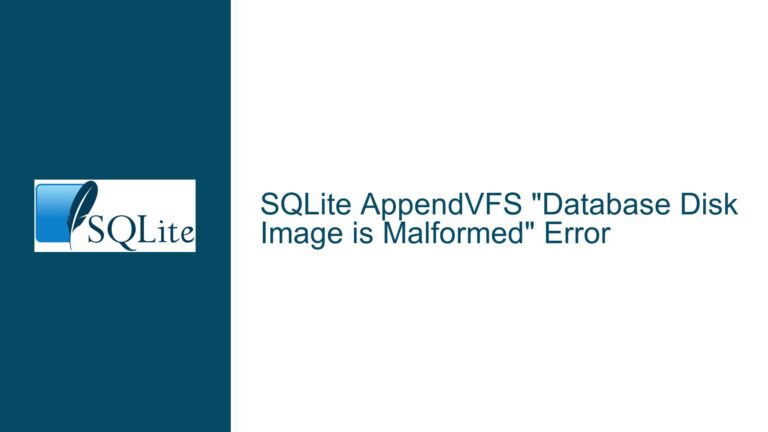and Addressing the Missing sqlite3changeset_upgrade Implementation in SQLite
Issue Overview: The Absence of sqlite3changeset_upgrade Implementation
The core issue revolves around the sqlite3changeset_upgrade function, which is documented in the SQLite API but lacks an actual implementation in the source code. This discrepancy has led to confusion among developers who rely on SQLite’s session extension for change tracking and data synchronization. The function is mentioned in the sqlite3session.h header file, and its documentation stubs are automatically generated, suggesting that it was intended to be part of the API. However, no functional implementation exists in the codebase, leaving developers unable to utilize this feature.
The sqlite3changeset_upgrade function is expected to play a critical role in upgrading changesets to work with newer versions of the database schema. Changesets are a fundamental part of SQLite’s session extension, which allows tracking and applying changes to a database. A changeset is a binary representation of a set of changes (inserts, updates, and deletes) made to a database. These changesets are often used in scenarios where data needs to be synchronized between different database instances, such as in distributed systems or offline-first applications.
The absence of sqlite3changeset_upgrade raises several questions about the intended functionality and its implications for developers. Without this function, developers may face challenges when dealing with schema migrations or changes in the database structure. For instance, if a database schema evolves over time, changesets generated from an older schema version may not be directly applicable to the newer schema. The sqlite3changeset_upgrade function was presumably designed to address this issue by transforming changesets to be compatible with the updated schema.
The lack of implementation also highlights a gap in SQLite’s session extension, which is otherwise a robust tool for change tracking. The session extension is widely used in applications that require data synchronization, and the absence of a critical function like sqlite3changeset_upgrade can hinder the ability to handle schema changes gracefully. This issue is particularly relevant in long-running applications where the database schema is expected to evolve over time.
Possible Causes: Why sqlite3changeset_upgrade Was Never Implemented
The absence of the sqlite3changeset_upgrade implementation can be attributed to several factors, ranging from accidental oversights to deliberate design decisions. Understanding these causes is essential for developers who rely on SQLite’s session extension and need to work around this limitation.
One possible cause is that the sqlite3changeset_upgrade function was initially planned as part of the session extension but was later deprioritized or abandoned due to technical challenges or shifting project priorities. SQLite’s development process is highly collaborative and iterative, with features being added, modified, or removed based on community feedback and practical considerations. It is possible that the function was deemed non-essential or too complex to implement at the time, leading to its exclusion from the final release.
Another possibility is that the function was accidentally left in the sqlite3session.h header file without a corresponding implementation. This could have occurred during a code cleanup or refactoring process, where the declaration was overlooked. The automatic generation of documentation stubs from the header file further compounded the issue, creating the impression that the function was available for use. This scenario underscores the importance of thorough code reviews and testing to ensure that all declared functions have corresponding implementations.
A third potential cause is that the functionality provided by sqlite3changeset_upgrade was deemed redundant or unnecessary in the context of SQLite’s session extension. SQLite’s session module is designed to be lightweight and efficient, and adding a function to upgrade changesets may have been seen as adding unnecessary complexity. Instead, developers may be expected to handle schema changes manually or through other mechanisms, such as versioning or custom transformation logic.
Finally, it is possible that the sqlite3changeset_upgrade function was intended for a future release but was never completed due to resource constraints or other priorities. SQLite’s development team is relatively small, and new features are often added incrementally. The function may have been slated for a future version but was never fully implemented due to competing demands on the development team’s time and resources.
Troubleshooting Steps, Solutions & Fixes: Working Around the Missing sqlite3changeset_upgrade Function
While the absence of sqlite3changeset_upgrade poses a challenge, there are several strategies that developers can employ to work around this limitation. These solutions range from manual changeset transformation to leveraging alternative features of SQLite’s session extension.
Manual Changeset Transformation
One approach is to manually transform changesets to make them compatible with an updated database schema. This involves parsing the changeset, identifying the changes that need to be modified, and applying the necessary transformations. While this approach requires a deep understanding of the changeset format and the schema changes, it provides full control over the transformation process.
To implement manual changeset transformation, developers can use SQLite’s sqlite3changeset_apply function to apply the changeset to a temporary database with the old schema. They can then extract the changes from the temporary database and apply them to the target database with the new schema. This approach effectively simulates the functionality of sqlite3changeset_upgrade by manually bridging the gap between the old and new schemas.
Schema Versioning
Another solution is to implement schema versioning in the application. By assigning version numbers to the database schema and changesets, developers can ensure that changesets are only applied to compatible schema versions. When a schema change is introduced, the application can check the version of the changeset and the database schema and take appropriate action, such as rejecting incompatible changesets or applying custom transformation logic.
Schema versioning can be implemented using a dedicated table in the database to store the schema version. When a changeset is generated, the schema version can be included as part of the changeset metadata. When applying the changeset, the application can compare the schema version in the changeset with the current schema version and handle any discrepancies accordingly.
Custom Transformation Logic
For more complex schema changes, developers can implement custom transformation logic to modify changesets on the fly. This approach involves writing code to parse the changeset, identify the changes that need to be modified, and apply the necessary transformations. While this approach requires significant effort, it provides the flexibility to handle a wide range of schema changes.
Custom transformation logic can be implemented using SQLite’s sqlite3changeset_iter function to iterate over the changes in a changeset. For each change, the application can check the schema version and apply the necessary transformations. The modified changes can then be applied to the target database using the sqlite3changeset_apply function.
Leveraging SQLite’s Session Extension
Finally, developers can leverage other features of SQLite’s session extension to work around the absence of sqlite3changeset_upgrade. For example, the sqlite3session_attach function can be used to attach additional tables to a session, allowing changes to be tracked across multiple tables. This can be useful in scenarios where schema changes involve adding or removing tables.
Additionally, the sqlite3session_diff function can be used to generate a changeset that represents the difference between two databases. This can be useful in scenarios where schema changes involve modifying the structure of existing tables. By generating a changeset that represents the difference between the old and new schemas, developers can apply the changeset to the target database to bring it up to date.
Conclusion
While the absence of sqlite3changeset_upgrade is a limitation, developers have several options for working around this issue. By implementing manual changeset transformation, schema versioning, custom transformation logic, or leveraging other features of SQLite’s session extension, developers can ensure that their applications can handle schema changes gracefully. These solutions require careful planning and implementation but provide the flexibility needed to work around the missing function.
In conclusion, the absence of sqlite3changeset_upgrade highlights the importance of thorough testing and documentation in software development. By understanding the causes of this issue and exploring potential solutions, developers can continue to leverage SQLite’s session extension for change tracking and data synchronization, even in the face of evolving database schemas.
